Art World
Graff’s Second Boutique in Paris Showcases ‘Trophy’ Jewels Alongside Works of Contemporary Art
At the new store near the Place Vendôme, you can see art by Vik Muniz as well as astonishing gems from Laurence Graff's private collection.
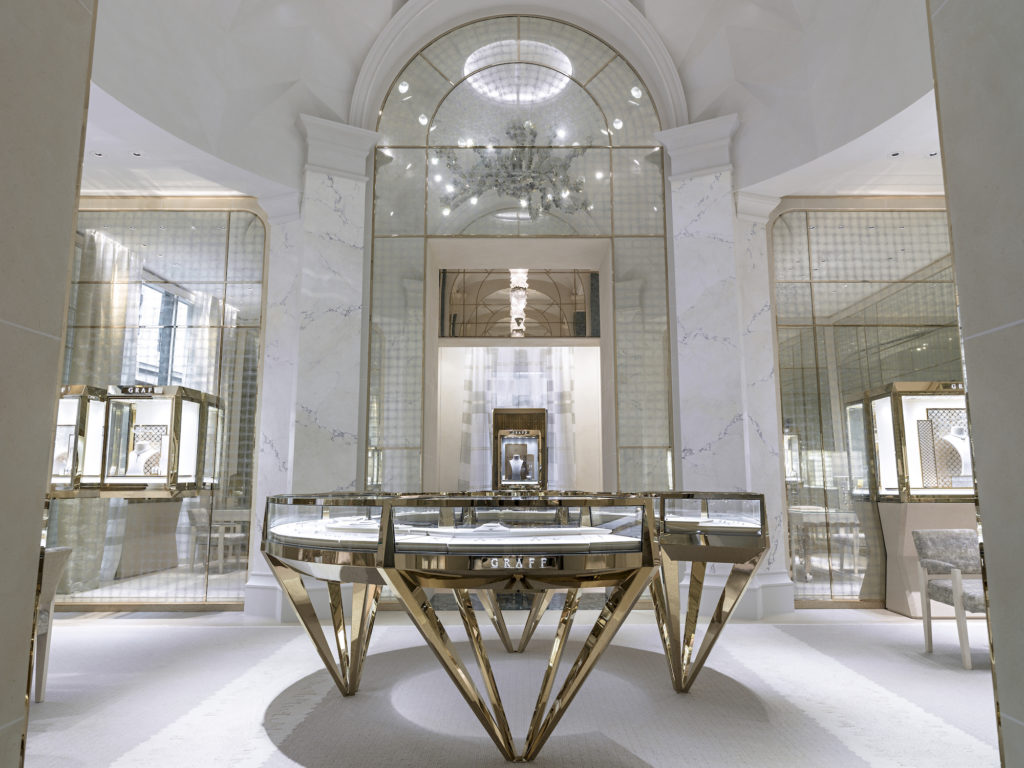
At the new store near the Place Vendôme, you can see art by Vik Muniz as well as astonishing gems from Laurence Graff's private collection.

Nazanin Lankarani

At the anteroom of the new Graff boutique in Paris, a sinuous bronze sets the tone for the art-filled space inside.
The sculpture, titled Torse Grebe, is the work of Jean Arp and illustrates a pivotal shift by the French-German artist towards abstraction in the late 1950s. It also symbolizes the lifelong passion for art that has made Laurence Graff, the founder of the family-owned jewelry company, an important art collector.
“The Arp piece is from the private collection of Mr. Graff, and all the art in this boutique reflects his taste,” a Graff spokesperson said on a recent tour of the new store.
The boutique, which opened in April, is Graff’s second in Paris, and it occupies one of the most covetable spots of the city’s luxury shopping district. Located at 237 Rue Saint-Honoré, on the corner of Rue de Castiglione, it is adjacent to the ever-trendy Hôtel Costes and steps from the famed Place Vendôme. If high fashion were on a collision course with high jewelry, this is where you would expect the two to meet.
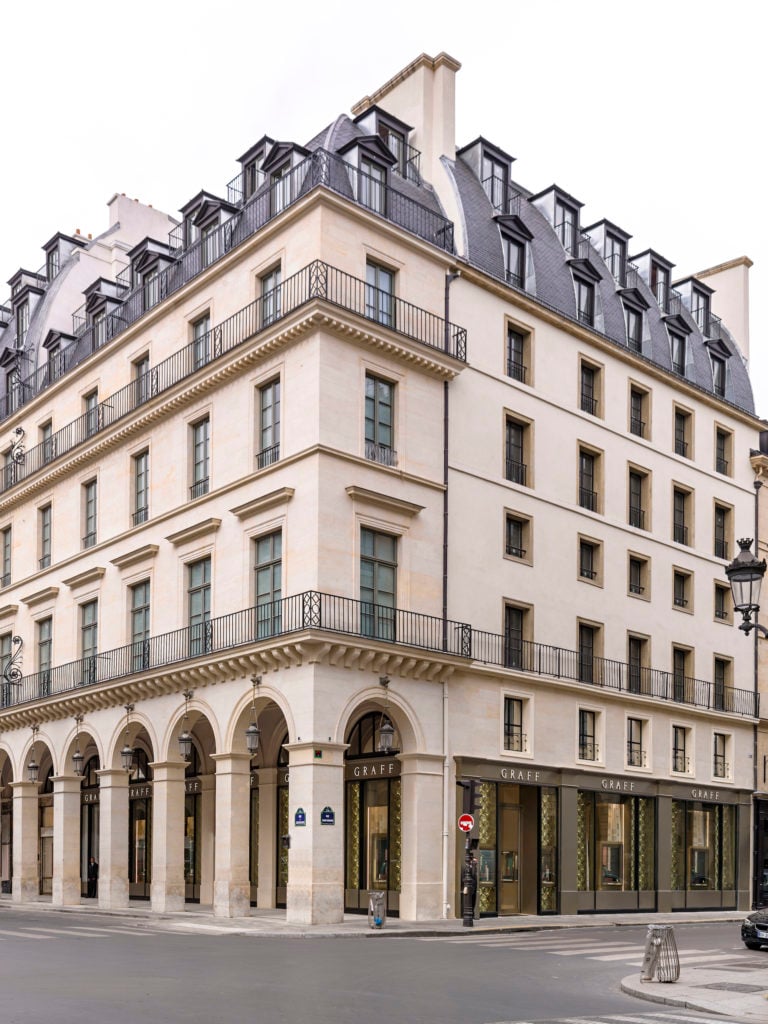
An exterior view of the boutique. Photo by Kristen Pelou, courtesy of Graff.
Just three years ago, Graff opened its first boutique at 17 Place Vendôme, next to the Ritz hotel. That space is now under renovation, to resume business in the fall. So why open a second boutique just 800 feet away? “The clientele is not the same,” the Graff spokesperson explained.
Like Graff, a number of high-jewelry houses on the Place Vendôme have embarked on extensive renovation projects, many of them intended to offer their clientele new immersive experiences of luxury in a refreshed setting with modern elegance. Boucheron, whose historic store reopened last winter after nearly two years of renovation, now offers a private suite with butler service from the Ritz in addition to its shopping salons. A few steps down from Boucheron, Chaumet’s mansion and Van Cleef & Arpels’s boutique are also closed for renovation.
Now, with 3,700 square feet of exhibition space, Graff’s new boutique has become the jeweler’s biggest flagship, undoubtedly a statement about the significance of a visible presence in the Parisian luxury market for the purveyor of some of the world’s most important stones.
Designed by the New York-based architect Peter Marino, the boutique boasts a main salon and three private reception areas, two of which are devoted to bridal offerings and high jewelry, respectively, while the third is reserved for VIP clients.
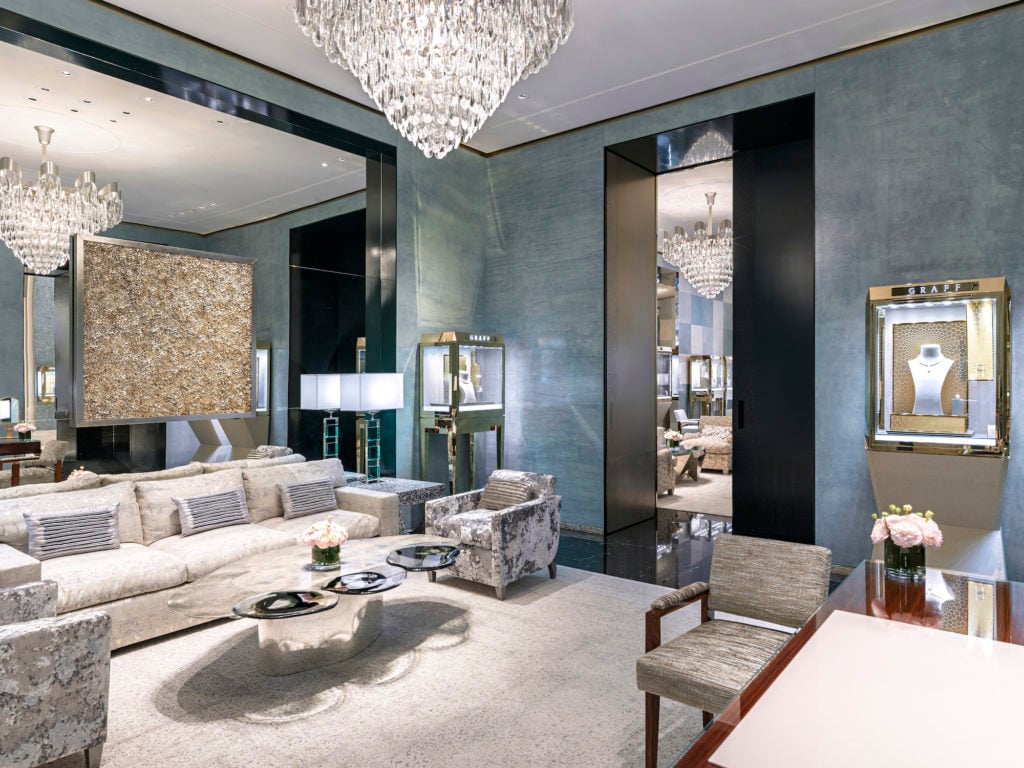
Inside the new flagship store. Photo by Kristen Pelou, courtesy of Graff.
The main salon is lined with mirrors—including a pair by the French artist Roland Mellan—and doubles as the store’s exhibition space. It is unofficially called the “Galerie des Glaces,” a reference to the hall of mirrors at the Palace of Versailles that Louis XIV would traverse daily to go from his royal apartments to his private chapel.
Double-height ceilings provide ample space for bespoke chandeliers, notably the bronze-and-glass piece by the New York-based artist Thaddeus Wolfe, known for his glass sculptures and light fixtures that suggest fantastical structures.
The bridal salon, meanwhile, is a one-stop shopping destination showcasing the full range of the jeweler’s pre-wedding selection—which, for a diamond specialist, is not negligible—under a geodesic ceiling.
In the VIP salon, virginal white gives way to cool aquatic colors on the lacquered canvas walls. There, Marino’s own bronze chest, Tall Dragon Scale Box, is a work of exquisite craftsmanship that straddles the line between art and design, and was first exhibited two years ago at the Gagosian gallery in London.
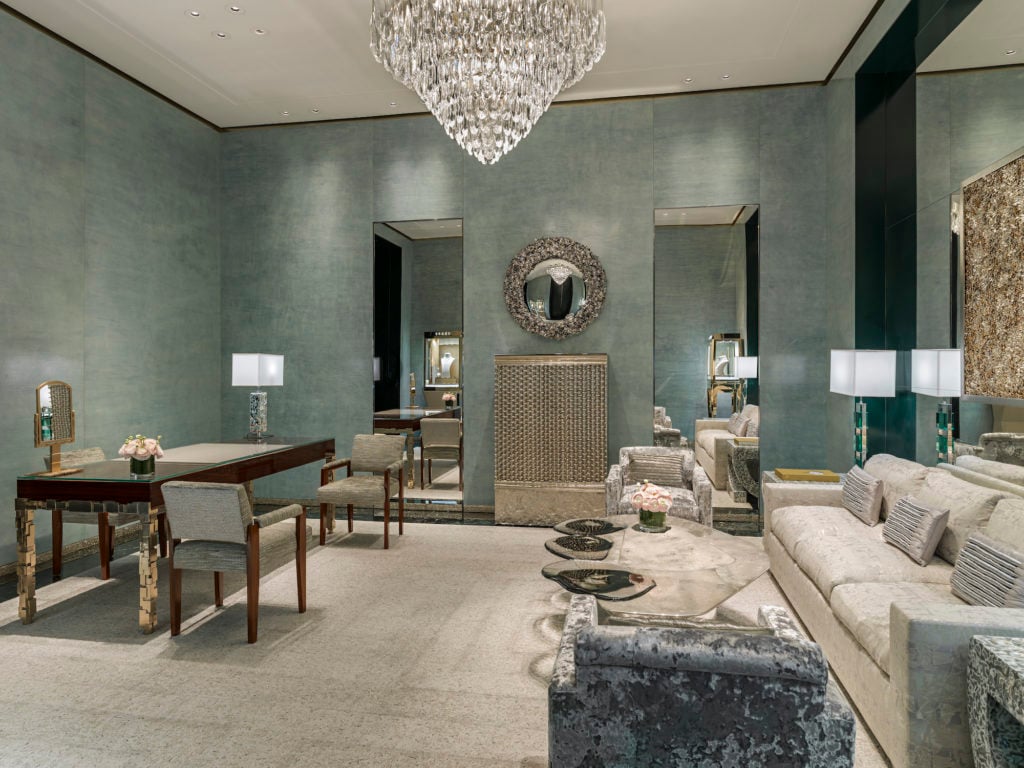
Another view of the store. Photo by Kristen Pelou, courtesy of Graff.
Behind a set of double doors, the high-jewelry salon is where Graff’s one-of-a-kind creations may be viewed. Above a stainless-steel table by Juan and Paloma Garrido, the brother-and-sister heirs of the celebrated Spanish silversmith Damián Garrido, hangs a portrait of Laurence Graff made entirely of diamonds—a photograph from the Brazilian-born artist Vik Muniz’s “Pictures of Diamonds” series.
But hands down the most unexpected feature of the boutique is its cabinet of curiosities, an update on the rooms popularized in the 16th century where erudite European collectors would display their exotic objects. Graff’s version, aptly called the “Treasury,” is designed to showcase a rotating selection of the rarest—and most precious—stones from Laurence Graff’s private safe.
Many of those trophy gems have deservedly made headlines over the years since 1960, when Graff founded his company. Some of the most celebrated include the 118-carat heart-shaped Graff Venus, the 603-carat Lesotho Promise, the 118.08-carat yellow Delaire Sunrise, the 299-carat Golden Empress, and also the Wittelsbach-Graff, the Graff Perfection, and the Graff Pink.
Another impressive recent entrant to the collection dates back two years, when Graff purchased the Lesedi La Rona for a reported $53 million. An awe-inspiring rock weighing 1,109 carats, it was one of the largest rough diamonds ever found, and was cut into 67 smaller stones. The last cut was presented this past spring in the shape of a square emerald-cut 302.37-carat, D-flawless diamond named the Graff Lesedi La Rona.
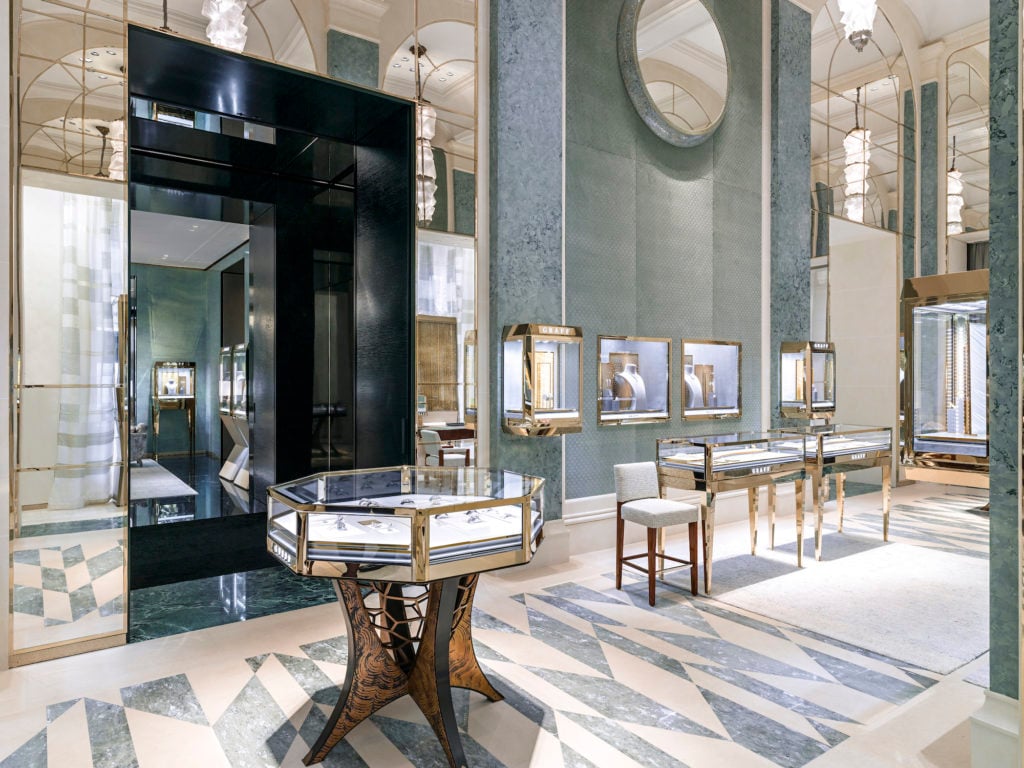
Display cases filled with jewelry line the boutique. Photo by Kristen Pelou, courtesy of Graff.
“You are not claustrophobic, I hope?” asked the spokesperson as she led the way into the room.
Lined from floor to ceiling with iridescent dark-green peacock feathers, each positioned by hand by an artisan feather-maker, the windowless chamber is pitch-black inside. A tiny spotlight comes on upon opening any of the three showcases in the wall; one displays a replica of the original Lesedi La Rona in rough form, while the others both feature a real gem from Graff’s private collection. Which other treasures will tour through the boutique’s gallery remains unknown, for now.
Overall, a sense of serenity emanates from the new boutique, thanks to the choice of muted pastels and tactile surfaces, despite it being filled with eye-catching art and imposing design pieces. Many decorative details will likely go unnoticed by visitors dazzled by the impressive Graff jewelry dripping with precious stones, with few detecting, for instance, the delicate shape of water lilies in the folds of velvet drapes in the high-jewelry salon.
“The inspiration for that design came from Impressionist art,” said the Graff spokesperson. “The idea was to evoke the shapes and organic color combinations of Claude Monet’s Water Lilies.”